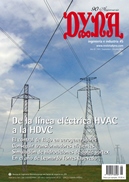TECHNOLOGY REVIEW, STANDARDS AND APPLICATIONS OF UNMANNED AERIAL VEHICLE IN ENGINEERING (PART 1)
Keywords:
UAV, RPAS, VANT, UAS, Segmento terrestre, Segmento aéreo, Centro de Control Local (CCL), Centro de Mando y Control (CMC), VLOS, BVLOS, BVLOS híbrido, VTOL, FCS, IMU, GPS, DGPS, Payload, HALE, MALE, ground segment, terrestrial segment, local command station, ground control stationAbstract
UAVs (Unmanned Aerial Vehicles ) are one of the areas within the aviation industry with the highest growth potential, which is demonstrated by the fact that its use has quadrupled in less than ten years . Compared to manned vehicles, these aircraft are more maneuverable and operating costs may be lower. In addition, they can avoid the risk inherent in manned flights in hostile environments, flight conditions with poor visibility or, in general, with adverse weather conditions. UAVs are controlled independently from land using programmed flight plans and are characterized by not carry an human operator on board vehicles. An UAV is associated with a special infrastructure, and broadly it is speaking of Unmanned Aerial Systems (UAS). A UAS is composed of: Air Segment : composed of the aerial platform, payload and communications system that transports. Ground segment: includes the control system of the aerial platform, communications equipment and the station can receive the information obtained by the sensors, in addition to the launch and recovery elements. Currently these systems are being used in both the military and civilian. Key words: UAV, RPAS, UAS, ground segment, terrestrial segment, local command station (LCS), ground control station (GCS), VLOS, BVLOS, Hybrid BVLOS, VTOL, Flight Control System (FCS), IMU, GPS, DGPS, Payload, HALE, MALE, FMEA.Downloads
Published
2016-09-01
Issue
Section
ARTICULOS

